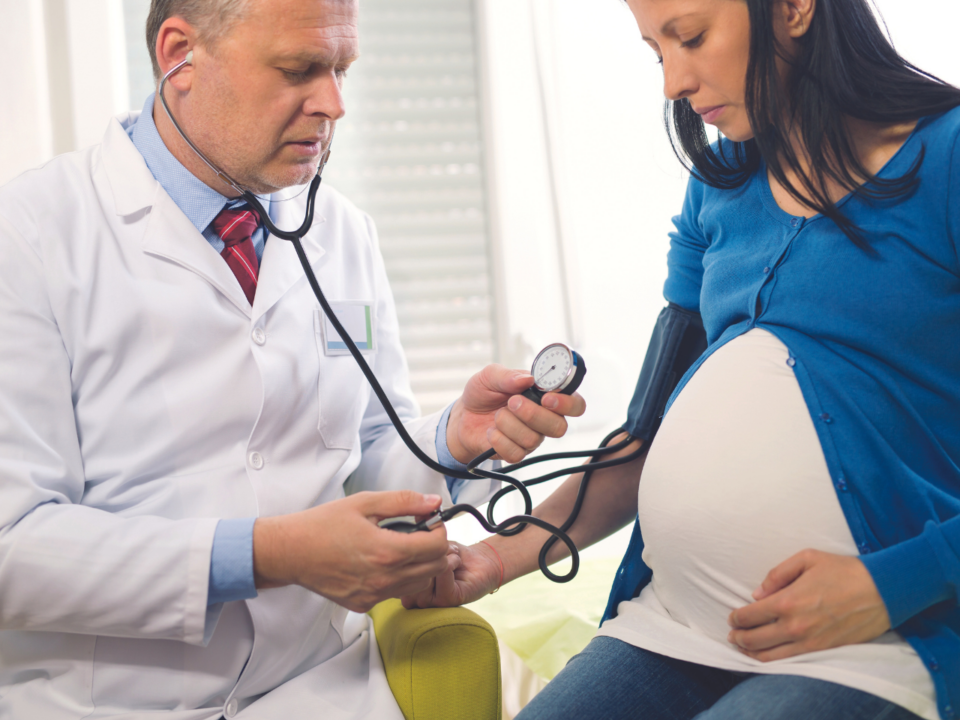
Preeclampsia: Before and After Pregnancy
If you have uncontrolled blood pressure, even when you are not pregnant, it can lead to a variety of health issues, including heart disease and stroke. If you have high blood pressure while you are pregnant, there can be additional complications for both you and your baby which can increase these health risks and even lead to preeclampsia.
Preeclampsia is a condition that occurs during pregnancy, and is characterized by the onset of high blood pressure in combination with other physical symptoms. This condition can have life-threatening effects on both you and your little one, therefore, it must be addressed quickly. While this condition can be treated, it is important to understand the signs, symptoms, and risk factors associated with it.
Signs and Symptoms
According to The Preeclampsia Foundation, preeclampsia occurs in approximately five to eight percent of all pregnancies, and onset typically starts after 20 weeks of gestation and lasts through six weeks postpartum (after delivery). Signs and symptoms of preeclampsia can include swelling of face and hands, persistent headache, changes in vision or eyesight, sudden changes in weight, and difficulty breathing in combination with the onset of high blood pressure. Dr. Laurie Whitaker, OB/GYN of Louisiana Women’s Healthcare Associates, clarifies, “There are several symptoms that a woman can have. Some women may have just one symptom and others may have a combination of several symptoms. High blood pressure must be present with one of these symptoms for it to be preeclampsia.”
High blood pressure is especially problematic during pregnancy. According to Dr. Whitaker, “High blood pressure during pregnancy can place extra stress on the heart and kidneys, and can increase the mother’s risk of heart disease, kidney disease, and stroke.”
Treating Preeclampsia
The most effective treatment for preeclampsia is delivering the baby, however, it can be dependent upon several factors. “The mother can remain pregnant as long as her symptoms and blood pressure are stable,” says Dr. Whitaker, “However, if there are any signs that her condition is worsening, delivery is recommended. Often, women with preeclampsia will not go past 37 weeks.”
While delivering the baby will essentially cure mom to be of preeclampsia, according to the National Institutes of Health, there are other options if diagnosed earlier in the pregnancy and delivery is not the safest option. If preeclampsia is mild, it may be possible to wait; opting for frequent monitoring (blood tests, ultrasounds) and bedrest to keep blood pressure low. In severe cases, mom will be admitted to the hospital and may even be given medications to control blood pressure and magnesium sulfate to reduce the risk of seizures.
Once a woman is diagnosed with preeclampsia, she is seven to eight times more likely to have it with subsequent pregnancies. Local mom, Amy Vandeveer Christina knows this reality well. Diagnosed with preeclampsia with her first pregnancy, her symptoms were severe enough to require delivery of her son at 35 weeks. “With each subsequent pregnancy, the condition required an earlier birth; my second pregnancy at 33 weeks and the third at 32,” she shares.
The Preeclampsia Foundation reports that high blood pressure disorders during pregnancy are the leading cause of maternal and infant illness or death. A conservative estimate indicates preeclampsia and hypertensive-related disorders are responsible for 76,000 maternal and 500,000 infant deaths a year. A shocking statistic for many mothers, including Amy, “Looking back now, I really don’t think my husband or I truly grasped the seriousness of the condition with my first pregnancy,” she explains.
Preeclampsia After Birth
The Centers for Disease Control and Prevention reports that preeclampsia can occur after childbirth, too. While rare, postpartum preeclampsia is typically diagnosed within 48 hours of childbirth, but onset can happen within the weeks to follow. Local mom, Jennifer Normand knows this experience all too well.
While recovering from the birth of her third child, Jennifer noticed she was having more and more painful headaches and had trouble sleeping. “I was used to recovery from giving birth twice before and didn’t expect anything new with this one,” she reports. However, like many new mothers, Jennifer was more concerned with caring for her newborn than herself and didn’t get checked. During a newborn well check, the focus quickly changed from her newborn to her health. A nurse, whom Jennifer credits for saving her life, asked specially how she was feeling. “I told her about the splitting headaches I was having and she told me to call my OB immediately.” When checked, Jennifer’s blood pressure was 183/103, and she was admitted to the hospital and started on a magnesium drip.
She was released from the hospital on blood pressure medication and had to monitor her pressure at home. Her blood pressure eventually returned to normal, however the experience certainly affected her. Understanding the severity of this condition has made a powerful impact on Jennifer as well. “I‘ve heard reports of how many women die in childbirth or shortly after, and I could completely relate. I can’t believe how lucky I am to be alive.”
While having preeclampsia is the number one risk factor of having it again with subsequent pregnancies, Dr. Whitaker shares the following factors that raise the risk for diagnosis.
- First time pregnancy
- Having a history of preexisting hypertension
- Pregnant at age 40 or older
- Carrying multiples (twins, triplets, etc.)
- Obesity
- Pregnant via in vitro fertilization
While the risk factors are clear, Dr. Whitaker further explains that there is still uncertainty as to the exact cause of preeclampsia. Whether risk factors are present or not, it is important to remember that every woman and every pregnancy is unique. If new symptoms develop, or if something changes during a pregnancy, listen to your body and contact your doctor.

